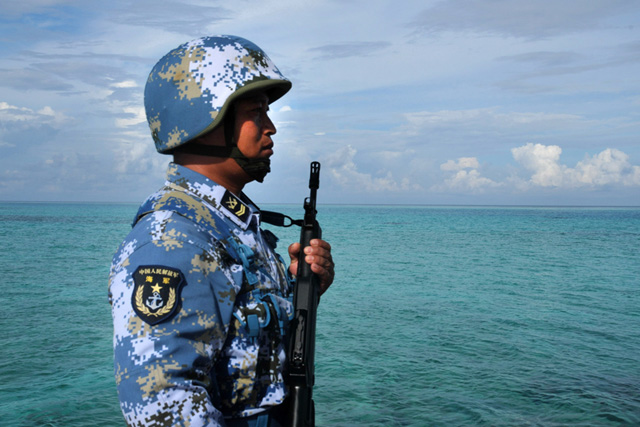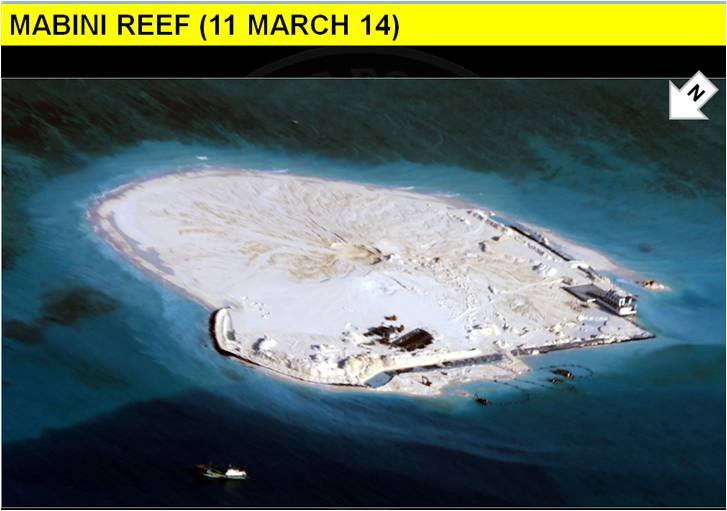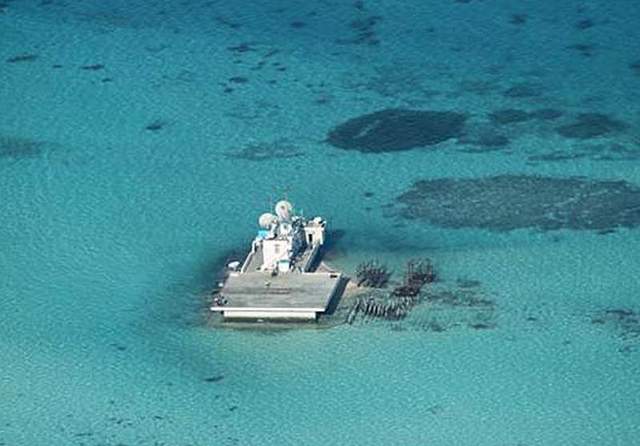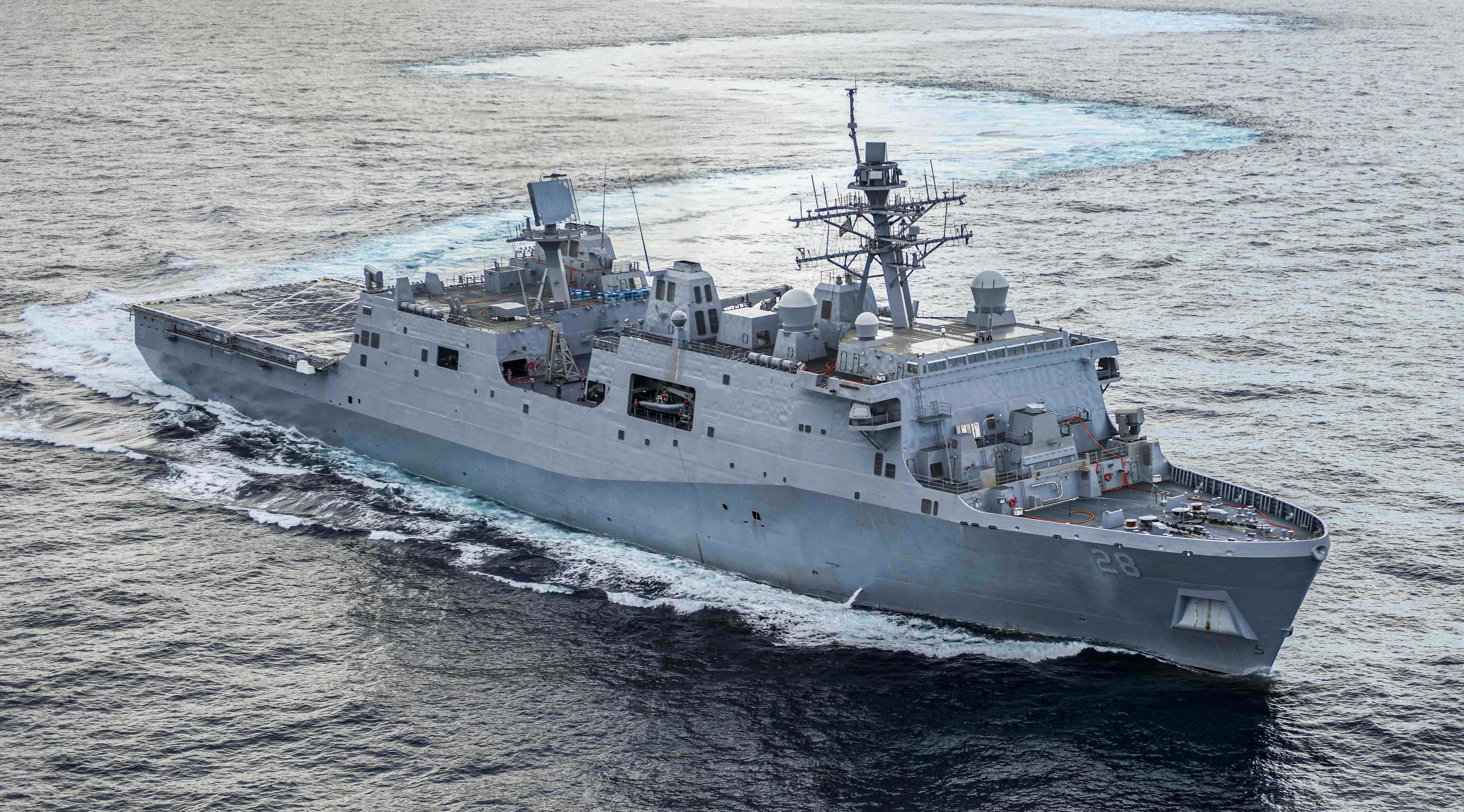
A new Chinese military outpost located in the South China Sea is again inflaming tensions between Beijing and and its regional neighbors in the Pacific.
On Thursday, Manila released aerial surveillance photos of the small facility, located on the on the Johnson South Reef in the hotly-contested international waterway, according to recent reports.
Officials from the Chinese embassy in Manila refused to comment on the images, reportedly gathered by sources allied with Philippine intelligence. However, a Foreign Ministry official in Beijing said the facility was located in Chinese sovereign waters.
News of the Chinese base also comes as Washington and the Philippines recently inked a landmark defense deal that will bring back U.S. troops to bases in the country for the first time since 2001.

For its part, Manila quickly disputed China’s territorial claims to the waters around the Johnson South Reef, noting the move was yet another aggressive effort by Beijing’s military planners to destabilize the region.
The move, according to Philippine Foreign Affairs Department spokesman Charles Jose was also in clear violation of a regional defense pact signed by China, the Philippines and several other regional powers.
View China Reclamation Effort in a larger map
In 2002, China and members of the Association of Southeast Asian Nations agreed to a non-aggression pact, designed to limit actions that would “complicate or escalate disputes” in areas like the South China Sea.
The pact also banned any effort by China or other ASEAN members to inhabit uninhabited areas in disputed regions in the Pacific. If verified, the new Chinese outpost is in violation of both key terms of the 2002 deal, according to Jose.
Despite Manila’s objections to the new Chinese facility, the Philippines have also sought to establish a permanent military presence in the South China Sea.

Philippine leaders announced last June build a new seaport in the Spratly Islands, off the coast of the Philippines, Malaysia and Vietnam in the South China Sea.The Philippine government claims the effort is strictly designed to support commercial business and tourism to the island.
However, this is not the first time Beijing has roiled regional neighbors by attempting to plant China’s flag in areas within the Pacific.
In late 2013, Chinese military forces set up a de facto no-fly zone for U.S. and allied military aircraft operating in the skies above the Diaoyutai and Senkaku islands in the East China Sea.
Under the so-called Aerial Defense Identification Zone, U.S. and allied forces were required to identify themselves and their mission to Chinese forces before entering the area.
The move set off months of military posturing and saber-rattling by Washington and China, with both nations sending in warplanes into the zone in a dangerous game of one-upmanship for control of the zone. In the end, tensions were cooled as Chinese and U.S. diplomats sought to quell tensions in the area.
Most recently, claims of harassment by Chinese warships against Vietnamese military and civilian vessels operating in the South China Sea have sparked violent anti-Chinese demonstrations in Saigon and elsewhere in the country.





